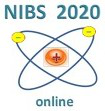Speaker
Description
Toward the coming JT-60SA tokamak operation, negative ion sources producing 500 keV and 22 A (130 A/m$^2$) H-/D- beams for 100 s are being developed for the JT-60SA neutral beam injector. So far, the extraction of 15 A H$^-$ beams for 100 s has been achieved, however, there are two remaining issues related to the unclear Cs behavior in the large size negative ion source (~1.2 m x 0.68 m x 0.55 m) during long pulse operation around 100 s. One of the issues is a limitation of available negative ion current due to arcing on filaments in the arc source for the long pulse operation with Cs. Another issue is the slow degradation of negative ion current during a long pulse due to the unexpected Cs flux to the plasma grid (PG) from the Cs-accumulated chamber wall (~8 g, ~2.8 m$^2$) around 100 $^o$C, although the PG temperature is controlled by around 200 $^o$C.
To achieve higher arc power for the negative ion current during the long pulse with Cs, the protection of the filaments is most important. For this purpose, a prototype of fast arcing detection/cutoff system using Field Programmable Gate Array (FPGA) has been developed for a group with 6 filaments. By optimizing the time resolution of the system and the logic of arcing detection, the cutoff time has been reduced to 100 $\mu$s, which is 1/10 faster than the previous system in the power supply and is enough short to reduce the damage to the filament. By applying this prototype, the stable production of negative ion beam with 500 keV, 154 A/m$^2$, 118 s has been achieved for the first time. During this experiment, even in the operational Cs amount of 5 g, 3 times longer life time of filaments were demonstrated. This result has been applied to the JT-60SA ion source by modifying the prototype to detect the arcing in 8 groups with 48 filaments for JT-60SA.
As for the slow degradation of the negative ion current during long pulse, the balance of the Cs layer on the PG surface is a key for the long pulse operation. This time, increase of PG temperature up to 300$^o$C is considered to accept the larger Cs flux to the PG according to the previous R&D. So far, the PG temperature was controlled by the high temperature fluorinated fluid whose limit is around 200 $^o$C due to the boiling point. In order to realize the PG temperature more than 250$^o$C during long pulse, the coolant was changed to the compressed air whose heat transfer coefficient is about 1/10 of the fluorinated fluid. In the preliminary tests, designed temperature of 300 $^o$C was sustained during 300 s up to a half of nominal arc power with heat flux of 30 kW/m$^2$. Based on the results, the PG temperature control system will be modified toward the JT-60SA ion source.

